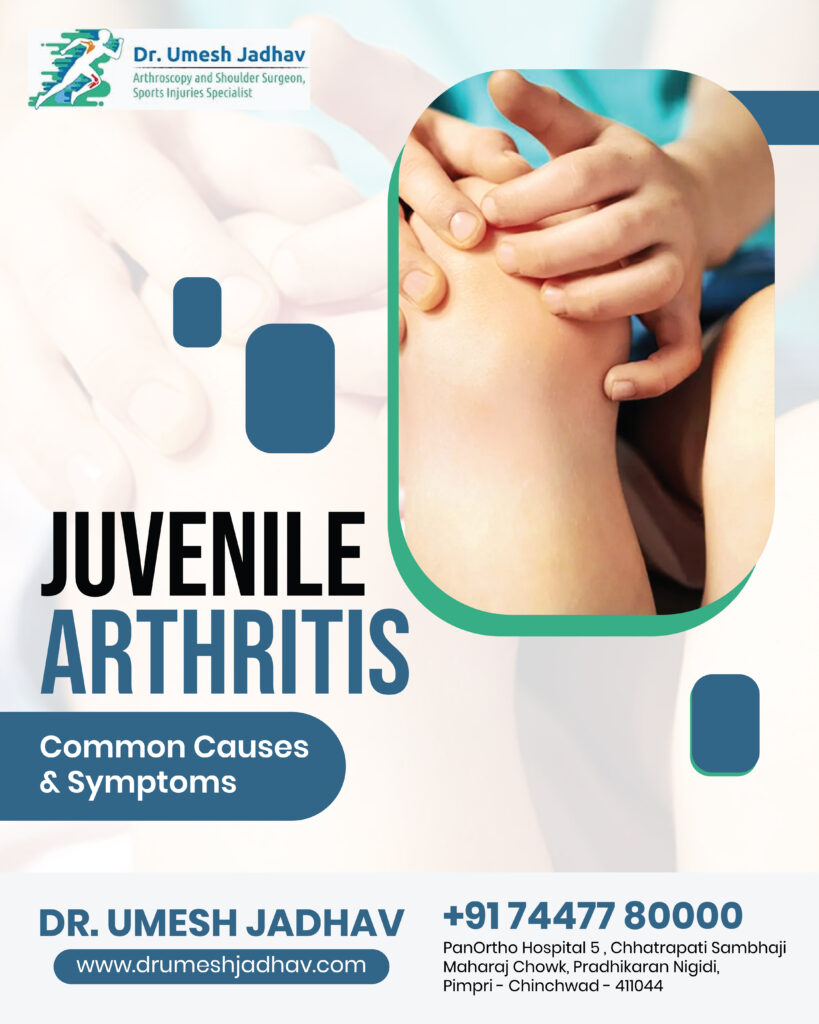Joint pain in children is often overlooked or mistaken as growing pains, but in some cases, it could be a sign of Juvenile Arthritis (JA) — a chronic inflammatory condition affecting children under the age of 16. Recognizing early symptoms and understanding its causes can help ensure timely diagnosis and proper treatment. If your child is experiencing persistent joint discomfort, swelling, or stiffness, it’s important to consult a orthopedic specialist in Nigdi, PCMC promptly. Early medical intervention can help manage symptoms effectively and prevent long-term joint damage.
What is Juvenile Arthritis?
Juvenile Arthritis refers to a group of autoimmune and inflammatory conditions that can cause joint swelling, pain, and stiffness in children. It is also known as Juvenile Idiopathic Arthritis (JIA), which is the most common form of arthritis in kids.
This condition can affect one or more joints and, in some cases, other organs like the eyes and skin.
Common Causes of Juvenile Arthritis
While the exact cause of Juvenile Arthritis is still unknown, several factors are believed to contribute to its development:
Genetic Factors
A family history of autoimmune diseases increases the risk of developing JA.
Autoimmune Response
Juvenile Arthritis is an autoimmune disorder, where the body’s immune system mistakenly attacks its own healthy joint tissues.
Environmental Triggers
Infections or viruses may trigger the immune system to react abnormally in genetically predisposed children.
Immune System Imbalance
A poorly regulated immune response can result in inflammation and joint damage over time.
Common Symptoms of Juvenile Arthritis
Juvenile Arthritis symptoms can vary from mild to severe. Here are the most common warning signs parents should watch for:
Persistent Joint Pain
Pain in the knees, ankles, wrists, or fingers that lasts more than a week.
Joint Swelling and Redness
Swollen joints that may feel warm or appear red.
Morning Stiffness
Children may have trouble moving joints after waking up.
Fatigue and Irritability
Constant tiredness, lack of interest in playing, or being unusually cranky.
Fever and Rash
Low-grade fever and skin rash in some types of Juvenile Arthritis.
Difficulty Walking or Limping
Especially noticeable in younger children who may resist putting weight on certain joints.
When to See a Doctor?
If your child complains of joint pain, swelling, or stiffness lasting more than 10–14 days, it’s crucial to consult a specialist. Early diagnosis can prevent long-term joint damage and help your child maintain an active lifestyle.
Diagnosis and Treatment Options
A Pediatric Rheumatologist or an Orthopedic Specialist may recommend:
-
Blood tests (ANA, ESR, CRP)
-
X-rays or MRI scans
-
Physical examination of affected joints
Treatment may include:
Anti-inflammatory medications
Disease-modifying antirheumatic drugs (DMARDs)
Physical therapy
Lifestyle changes including healthy diet and gentle exercises
Conclusion
Juvenile Arthritis is a serious but manageable condition when diagnosed early. If your child is experiencing joint pain, don’t ignore the signs.
Dr. Umesh Jadhav, a trusted Orthopedic Specialist in PCMC, offers expert evaluation and personalized treatment for children suffering from joint pain and arthritis-related symptoms. His patient-first approach ensures compassionate and effective care for your little one’s joint health.

